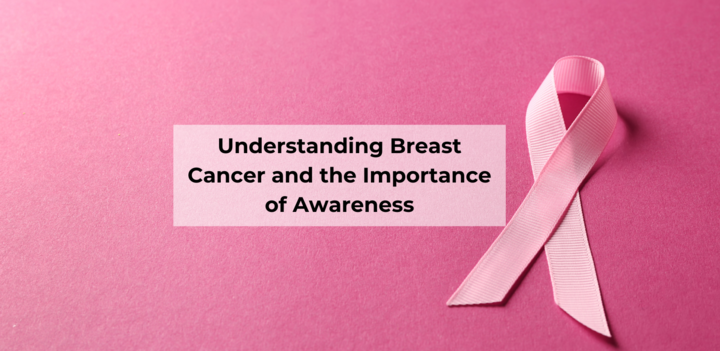Maintaining good prostate health is crucial for men, especially as they age. The prostate is a small, walnut-sized gland located just below the bladder and in front of the rectum. It plays a vital role in the male reproductive system, primarily by producing fluid that nourishes and transports sperm. However, like any other part of the body, the prostate is susceptible to various health issues that can significantly impact a man's quality of life. In this blog, we'll explore important facts and information about prostate health, focusing on the most common conditions affecting the prostate, preventative measures, and treatment options. We'll also highlight the latest statistics from 2024 and discuss how ModRN Health can assist in managing prostate health.
Key Takeaways
- The prostate is essential for male reproductive health, but it is prone to several conditions, especially as men age.
- Prostate cancer is one of the most common cancers among men in the United States, with early detection being key to successful treatment.
- Benign prostatic hyperplasia (BPH) is a common, non-cancerous enlargement of the prostate that can cause urinary problems.
- Prostatitis, an inflammation of the prostate, can affect men of all ages and can be either acute or chronic.
- Regular screenings and lifestyle modifications are crucial for maintaining good prostate health.
- ModRN Health provides access to affordable medications and treatments for prostate-related conditions.
The Prostate: An Overview
The prostate gland, though small, plays a critical role in male health. It is part of the male reproductive system and is responsible for producing seminal fluid, which mixes with sperm to create semen. This fluid helps protect and energize sperm, aiding in reproduction. As men age, the prostate can undergo changes that lead to various health conditions.
Common Prostate Conditions
1. Prostate Cancer
Prostate cancer is the most common cancer in American men, aside from skin cancer. According to the American Cancer Society, in 2024, about 288,000 new cases of prostate cancer are expected to be diagnosed in the United States, and approximately 34,700 men will die from the disease. The risk of developing prostate cancer increases with age, with most cases occurring in men over 65. Other risk factors include a family history of prostate cancer, race (African American men are at higher risk), and certain genetic mutations.
Symptoms of Prostate Cancer:
- Difficulty urinating or a weak urine stream.
- Blood in the urine or semen.
- Erectile dysfunction.
- Discomfort in the pelvic area.
- Bone pain (in advanced stages).
Early detection through regular screening, including prostate-specific antigen (PSA) tests and digital rectal exams (DRE), is critical. While these screenings aren't foolproof, they can help detect prostate cancer early when it is most treatable.
2. Benign Prostatic Hyperplasia (BPH)
Benign prostatic hyperplasia (BPH) is a non-cancerous enlargement of the prostate gland. It's a common condition, particularly among older men. By age 60, about 50% of men will have some signs of BPH, and by age 85, the prevalence increases to 90% . BPH can lead to bothersome urinary symptoms, such as:
- Frequent urination, especially at night.
- Difficulty starting urination.
- Weak urine stream or a stream that stops and starts.
- Inability to completely empty the bladder.
While BPH is not cancerous, it can significantly impact a man's quality of life. Several treatment options are available, including lifestyle changes, medications, and, in some cases, surgery.
3. Prostatitis
Prostatitis is an inflammation of the prostate gland and can affect men of all ages. It can be classified as acute or chronic, with varying symptoms:
- Acute bacterial prostatitis: This is a sudden bacterial infection that requires prompt medical attention. Symptoms include fever, chills, difficulty urinating, and pelvic pain.
- Chronic bacterial prostatitis: This is a recurrent bacterial infection that can be harder to treat. Symptoms are similar to acute prostatitis but may be less severe.
- Chronic prostatitis/chronic pelvic pain syndrome (CP/CPPS): The most common but least understood form, CP/CPPS, is characterized by chronic pelvic pain, urinary issues, and sexual dysfunction without a bacterial infection.
Treatment depends on the type of prostatitis and may include antibiotics, alpha-blockers, or anti-inflammatory medications.
Medications for Prostate Health
Several medications are commonly prescribed to manage prostate conditions like BPH, prostatitis, and prostate cancer. Here are four frequently used medications:
- Finasteride (Proscar)
- Used for: Benign Prostatic Hyperplasia (BPH)
- How it works: Finasteride reduces the size of the prostate gland by inhibiting the enzyme 5-alpha-reductase, which converts testosterone to dihydrotestosterone (DHT). Lowering DHT levels helps shrink the prostate and relieve urinary symptoms.
- Tamsulosin (Flomax)
- Used for: Benign Prostatic Hyperplasia (BPH)
- How it works: Tamsulosin is an alpha-blocker that relaxes the muscles in the prostate and bladder neck, making it easier to urinate. It’s particularly effective for men with moderate to severe BPH symptoms.
- Ciprofloxacin (Cipro)
- Used for: Bacterial Prostatitis
- How it works: Ciprofloxacin is a broad-spectrum antibiotic that treats bacterial infections of the prostate. It’s commonly prescribed for acute and chronic bacterial prostatitis.
- Leuprolide (Lupron)
- Used for: Advanced Prostate Cancer
- How it works: Leuprolide is a hormone therapy that lowers testosterone levels in the body, slowing the growth of prostate cancer. It’s often used in combination with other treatments for advanced or metastatic prostate cancer.
Maintaining Prostate Health
Maintaining good prostate health involves a combination of regular screenings, lifestyle modifications, and, when necessary, medical treatment. Here are some key strategies:
1. Regular Screenings
Regular screenings, including PSA tests and DREs, are essential for early detection of prostate issues. The American Cancer Society recommends that men discuss the potential benefits and risks of prostate cancer screening with their healthcare provider starting at age 50, or earlier if they have risk factors.
2. Healthy Diet and Exercise
A diet rich in fruits, vegetables, whole grains, and lean proteins can support prostate health. Foods high in antioxidants, such as tomatoes (which contain lycopene), green tea, and cruciferous vegetables like broccoli, may be particularly beneficial. Regular physical activity also helps maintain a healthy weight, reducing the risk of BPH and prostate cancer .
3. Avoid Smoking and Limit Alcohol
Smoking has been linked to an increased risk of prostate cancer, while excessive alcohol consumption can worsen BPH symptoms. Quitting smoking and moderating alcohol intake can have positive effects on prostate health .
4. Manage Stress
Chronic stress can exacerbate symptoms of prostatitis and may also affect prostate cancer outcomes. Techniques such as mindfulness, yoga, and deep breathing exercises can help manage stress levels .
Conclusion
Prostate health is a vital aspect of overall well-being for men, particularly as they age. Understanding the risks, symptoms, and treatment options for common prostate conditions such as prostate cancer, BPH, and prostatitis is crucial. Regular screenings, a healthy lifestyle, and effective stress management are key components of maintaining good prostate health.
ModRN Health plays an important role in managing prostate health by providing access to affordable medications. By utilizing ModRN Health, you can ensure that cost is not a barrier to receiving the treatment you need to maintain your prostate health and overall quality of life. Stay proactive, get screened regularly, and make informed choices about your health—your prostate will thank you.








